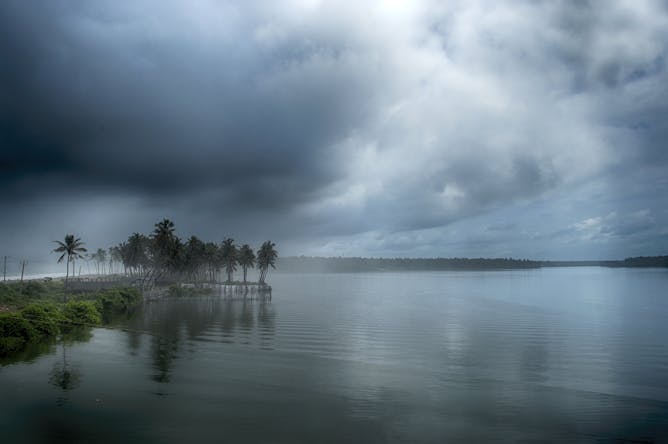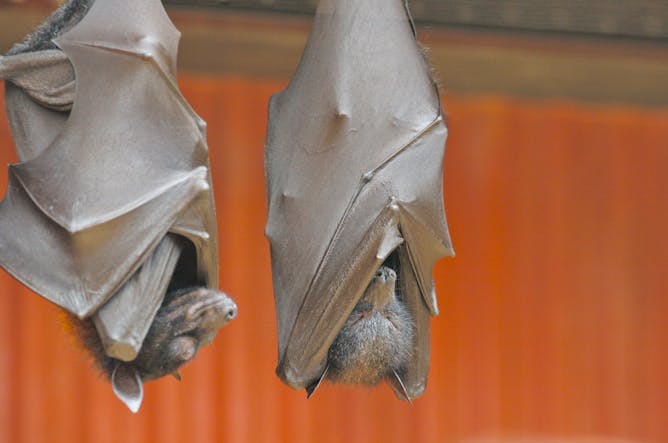|
|
|
Editor's note
|
|
For 1.7 billion people, the Indian summer monsoon can mean drought and food shortages or widespread flooding between June and September. Being able to predict how climate change will affect the weather system in future could help people on the Indian subcontinent prepare. Luckily, there are clues in the distant past from the last time this weather system underwent abrupt climate change. Katrina Nilsson-Kerr and Pallavi Anand reveal how
global warming strengthened India’s monsoon 130,000 years ago, causing it to pull warmth and moisture far into the northern hemisphere – hastening the end of an ice age.
The Conversation offers young people of all ages the chance to have their questions about the world answered by experts. Curious Kids is a series for children aged three to 12: in the latest instalment, a primary school class discovers why bats sleep upside down. And when a teenager wanted to know how to help a friend who’s depressed, we asked psychology expert Lowri Dowthwaite to explain, as part of I Need To Know – a Q&A series for young people aged 13 to 18.
Details on how to submit questions can be found at the bottom of each article.
Only 2% of English children cycle to school, despite the dramatic health and environmental benefits that cycling provides. But new research shows there is the potential for 40% to cycle to school, if they did so at similar rates to Dutch children. Current low levels are doubtless due to the largely hostile cycling environments seen in much of the UK, say experts: transport policy has long prioritised the needs of cars, and this needs to
change.
|
Jack Marley
Commissioning Editor
|

|
|
Top stories
|

Monsoon clouds approach in India.
Manoj Felix/Shutterstock
Katrina Nilsson-Kerr, The Open University; Pallavi Anand, The Open University
The Indian summer monsoon rainfall affects the lives of over a billion people. By looking at how prehistoric climate changes affected it, scientists can contribute to its future prediction.
|

Zzzzzzz…
Flickr/Ryan Poplin
Amy Edwards, La Trobe University
Sometimes, two different animals will evolve to have a similar adaptation, even when they are not closely related. Flight is an excellent example.
|

Luke Ellis-Craven/Unsplash.
Lowri Dowthwaite, University of Central Lancashire
Depression can affect people at any stage in life – here, an expert in psychology answers a young reader's question about how to help.
|

Yosmoes815/Shutterstock.com
Rachel Aldred, University of Westminster; Anna Goodman, London School of Hygiene & Tropical Medicine; James Woodcock, University of Cambridge; Robin Lovelace, University of Leeds
In England, one in fifty children cycle to school. But if English children cycled at the same rates as Dutch children, this could rise to two in five.
|
Politics + Society
|
-
Alexi Drew, King's College London
Fake news doesn't respect borders so working together is the only option.
-
Jonathan Beloff, SOAS, University of London
The concept of 'agaciro' is central to how Rwanda engages with the international community and promotes its state interests.
|
|
Cities
|
-
Zia Wadud, University of Leeds
Using driverless cars to get from A to B in the future will mean more free time to do other activities – but will people really use it productively?
|
|
Arts + Culture
|
-
Richard Tresidder, Sheffield Hallam University
Once derided, UK food culture has improved out of sight thanks to Europe.
|
|
Business + Economy
|
-
Kelsey Erickson, Leeds Beckett University; Susan Backhouse, Leeds Beckett University
Whistleblowing on doping can and does have life-altering implications for athletes – new research.
|
|
Environment + Energy
|
-
Harriet Thew, University of Leeds
The school strikes are a serious moral challenge to climate inaction, but they must overcome certain challenges to maintain momentum.
|
|
|
|
| |
Featured events
|

|
St Helens Road, Ormskirk, Lancashire, L39 4QP, United Kingdom — Edge Hill University
|

|
East Road, Cambridge, Cambridgeshire, CB11PT, United Kingdom — Anglia Ruskin University
|

|
Room 103, 51 Gordon Square, London, London, City of, WC1H 0PN, United Kingdom — UCL
|

|
Museum of English Rural Life, Redlands Road,, Reading, Reading, RG1 5EX, United Kingdom — University of Reading
|
|
|
|
| |
| |
| |
| |
| |
|
|
|
|
|
|
|